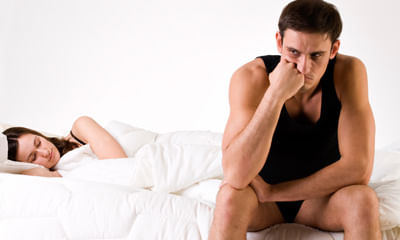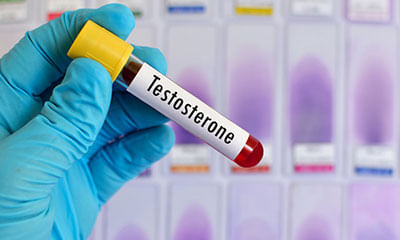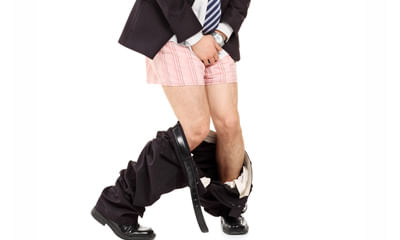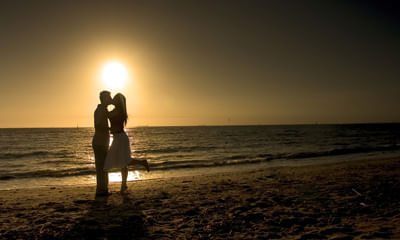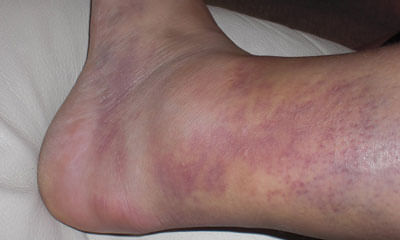Varicose Veins Surgery
varicose veins treatment in civil hospital ahmedabad my mother problem varicose veins please consultants. ...
Ask Free Question
I am sorry to hear about your concern but will be happy to assist you. Varicose vein surgery is considered to be safe, but all surgery has some degree of risk. Possible complications may include: infection, particularly if you had skin ulcers. Blood clots forming within deep veins. Let's connect over a call so that we can discuss your concern in details and make a treatment plan for you.
Im 19 years old i’ve been having erection issues since september last year. I no longer get random erections or morning ...
Ask Free Question
Hello- you are suffering from masturbation induced varicocele. Male infertility and varicocele (also known as pampiniform plexus) has been a painful factor for men and majority of men undergoes different battles when diagnose with varicocele disorder. Previously varicocele have been causing serious disappointment for men at their ability to enjoy fatherhood, while other men went through terrible disturbing pains, discomfort and unable to enjoy sexual fulfilment. However, the good news is that there is all natural ways to clear varicocele without surgery or risky chemical drugs with the help of safe and effective ayurvedic medicines.
I observed this varicose veins since 2 yrs if doctor suggests surgery how much time it will take? ...
Ask Free Question
The time to heal will depend on the extent of the varicose veins and it is usually one week treatment
In one testicle part feeling pain and size change of one testicle not too pain what I have do. ...
Ask Free Question
If your left testicle hurts, it’s important to know some of the more common causes, their symptoms, and some treatment options that your doctor may discuss with you. 1. Varicoceles you have arteries throughout your body that deliver oxygen-rich blood from the heart to bones, tissue, and organs. You also have veins that carry oxygen-depleted blood back to the heart and lungs. When a vein in a testicle becomes enlarged, it’s called a varicocele. Varicoceles affect up to 15 percent of males. Like varicose veins in your legs, varicoceles may appear bulgy under the skin of your scrotum. They tend to form in the left testicle because the vein on the left side hangs lower. This makes it a little more difficult for the valves in that vein to keep pushing blood up into the body. Treatment you may not need treatment for a varicocele, though if it’s causing you pain or fertility problems, then you should discuss treatment options with a urologist. Surgery can close off blood flow in the enlarged part of the affected vein and reroute it through other veins. Surgery is usually successful in eliminating pain and allowing for healthy testicle function. Fewer than 1 in 10 surgical patients have recurring varicoceles. 2. Orchitis orchitis is inflammation of the testicles, usually triggered by a virus or bacterial infection. Pain may start in the left or right testicle and remain there or spread throughout the scrotum. In addition to pain, the scrotum may swell and turn warm. The skin may turn reddish, and the scrotum may feel firmer or more tender than usual. The mumps virus is often the cause of orchitis. If that is the case, then symptoms in the scrotum may not appear for up to a week. Sexually transmitted infections (stis), such as gonorrhea, or a urinary tract infection may also lead to orchitis. Treatment treatment options for orchitis depend on its underlying cause. A bacterial infection can be treated with antibiotics. A virus, such as the mumps, usually just needs time to resolve itself. Over-the-counter pain medications may help ease your symptoms. 3. Spermatocele a spermatocele is a cyst or fluid-filled sac that forms in the tube that carries sperm from the upper part of a testicle. A spermatocele can develop in either testicle. If the cyst remains small, you may never have any symptoms. If it grows, that testicle may hurt and feel heavy. You may notice a change in the affected testicle during a self-exam. If you do, you should see your doctor. It’s unknown why spermatoceles form. If you have no symptoms, you may not need any treatment. Treatment if you’re experiencing pain and discomfort, a surgical procedure called a spermatocelectomy can remove the cyst. The operation does carry the risk of affecting fertility, so in some cases, men are advised to wait until they are done having children before undergoing the procedure. 4. Testicular torsion considered a medical emergency, testicular torsion occurs when the spermatic cord becomes twisted in the testicle, cutting off its blood supply. The spermatic cord is a tube that helps support the testicles in the scrotum. If the condition isn’t treated within six hours, a man could lose the affected testicle. Testicular torsion is somewhat unusual, affecting about 1 in 4,000 young men. One of the most common causes of testicular torsion is a condition called “bell clapper” deformity. Instead of having a spermatic cord that holds the testicles firmly in place, someone born with bell clapper deformity has a cord that allows the testicles to move more freely. This means the cord can be more easily twisted. Testicular torsion usually affects only one testicle, with the left testicle being the most common. The pain usually comes on suddenly and with swelling. Treatment testicular torsion must be treated surgically, though an emergency room doctor may be able to temporarily untwist the cord by hand. An operation involves securing the testicle with sutures to the inner wall of the scrotum to avoid future twisting. If bell clapper deformity is diagnosed, the surgeon may secure the other testicle to the scrotum even if there’s been no torsion. 5. Hydrocele inside the scrotum, a thin layer of tissue surrounds each testicle. When fluid or blood fills this sheath, the condition is called a hydrocele. Usually the scrotum will swell, and there may or may not be pain. A hydrocele can develop around one or both testicles. A hydrocele is more common in infants and tends to resolve itself within a year or so after birth. But inflammation or injury can cause a hydrocele to form in older boys and men. Treatment surgery may be needed to remove the hydrocele. You may need to have fluid or blood drained from around the testicle after the operation, which is called a hydrocelectomy. Follow-up appointments and self-exams are recommended, as a hydrocele can form again, regards Dr. Ms. haque.
A while ago, I felt goosebumps and a strange movement in my testicles. I felt that the temperature of my testicles was h ...
Ask Free Question
Hello- don't rely on color doppler test as it can not detect initial varicocele issues. If it is visible from outside then yes you have varicocele. Male infertility and varicocele (also known as pampiniform plexus) has been a painful factor for men and majority of men undergoes different battles when diagnose with varicocele disorder. Previously varicocele have been causing serious disappointment for men at their ability to enjoy fatherhood, while other men went through terrible disturbing pains, discomfort and unable to enjoy sexual fulfilment. However, the good news is that there is all natural ways to clear varicocele without surgery or risky chemical drugs with the help of safe and effective ayurvedic medicines.
After exercise I noticed my left testis swollen. I felt no pain but just weight and pressurized testicle and went to doc ...
Ask Free Question
Hello- if testicles feel squidgy like a bag of worms then you may have a varicocele, which is a varicose vein of the scrotum. During exercise, these can swell and cause discomfort. The best thing to do if you notice pain or discomfort is to consult a ayurveda doctor. Male infertility and varicocele (also known as pampiniform plexus) has been a painful factor for men and majority of men undergoes different battles when diagnose with varicocele disorder. Previously varicocele have been causing serious disappointment for men at their ability to enjoy fatherhood, while other men went through terrible disturbing pains, discomfort and unable to enjoy sexual fulfilment. However, the good news is that there is all natural ways to clear varicocele without surgery or risky chemical drugs with the help of safe and effective ayurvedic medicines.
Hello sir I am 23 year old and in my left side of testis I feel veins enlarge and sometimes I it’s hidden nothing to see ...
Ask Free Question
For scrotum related issues get scrotum ultrasound report first and for rest of your problem follow these herbal combinations vrihad vangeshwar ras 1 tablet twice a day kamdev avleh 10 gm twice a day.
My right side ankle is swelling and it looks like the bone is going outward. While touching ankle it feels like there is ...
Ask Free Question
Home care to treat a swollen ankle or leg at home, remember the acronym rice: rest. Stay off your ankle or leg until you can get to the doctor or until the swelling goes away. Ice. Put ice on the swollen area as soon as you can for 15 to 20 minutes. Then repeat every three to four hours. Compression. Wrap your ankle or leg snugly, but be sure not to cut off circulation. Support stockings may be an option. Elevation. Raise your ankle or leg above your heart (or as far above your heart as possible). Two pillows will usually give you the correct elevation. This encourages fluid to move away from your leg. Medical treatment if you seek medical attention, your physician will likely determine what’s causing your symptoms. Testing may include: blood tests an x-ray an electrocardiogram urinalysis if the swelling is caused by a medical condition such as congestive heart failure, the doctor may prescribe diuretics. These medications affect the kidneys and stimulate them to release fluids. If an ongoing medical condition such as rheumatoid arthritis is the root of the problem, your treatment may turn into management and prevention of that condition. Swelling due to injury may require bone resetting, a cast, or surgery to repair the injured area. For swelling that’s painful, a doctor may prescribe a pain reliever or over-the-counter anti-inflammatory medication, such as ibuprofen (advil) or naproxen sodium (aleve). Mild swelling from pregnancy or a mild injury usually goes away on its own after delivery of the baby or with sufficient rest. After treatment, you should contact your doctor if: your swelling gets worse you have breathing difficulty or chest pain you feel dizzy or faint exercise precautions while you can’t always prevent injuries during physical activity, warming up first can help. This includes a walk or light jog before engaging in vigorous physical activity. Choose supportive footwear. Proper shoes can help correct any gait issues and prevent injuries. You should choose shoes that match your activity or your specific needs. If you jog or run, get fitted by a professional for the correct shoe. Compression socks compression socks apply pressure to your lower leg. In some cases, this can help prevent and alleviate ankle and foot swelling caused by certain conditions, such as: deep vein thrombosis lymphedema varicose veins venous insufficiency you should check with your doctor before using compression socks for your swelling. These special socks should be properly fitted for you and your needs. Also, be sure to wear them during the day and remove them before you go to bed. Leg elevation.
Sir mey usg scrotum kiya magar normal aya magar sir sometime when I touch testicle part of right a vain modi modi hota h ...
Ask Free Question
Hello- you might be suffering from varicocele. It is an enlargement of the veins within the loose bag of skin that holds your testicles (scrotum). A varicocele is similar to a varicose vein you might see in your leg. Male infertility and varicocele (also known as pampiniform plexus) has been a painful factor for men and majority of men undergoes different battles when diagnose with varicocele disorder. Previously varicocele have been causing serious disappointment for men at their ability to enjoy fatherhood, while other men went through terrible disturbing pains, discomfort and unable to enjoy sexual fulfilment. However, the good news is that there is all natural ways to clear varicocele without surgery or risky chemical drugs with the help of safe and effective ayurvedic medicines.
I have done laser for very light varicose veins and no complications in report but after surgery my sensation got lost a ...
Ask Free Question
Back pain can affect people of any age, for different reasonsas people get older, the chance of developing lower back pain increases, due to factors such as previous occupation and degenerative disk disease. Lower back pain may be linked to the bony lumbar spine, discs between the vertebrae, ligaments around the spine and discs, spinal cord and nerves, lower back muscles, abdominal and pelvic internal organs, and the skin around the lumbar area. •acute pain starts suddenly and lasts for up to 6 weeks. •chronic or long-term pain develops over a longer period, lasts for over 3 months, and causes ongoing problems. Home advise: •resting from strenuous activity can help, but moving around will ease stiffness, reduce pain, and prevent muscles from weakening. •applying heat, ice, ultrasound, and electrical stimulation — as well as some muscle-release techniques to the back muscles and soft tissues — may help alleviate pain. •as the pain improves, the physical therapist may introduce some flexibility and strength exercises for the back and abdominal muscles. Techniques for improving posture may also help. •the patient will be encouraged to practice the techniques regularly, even after the pain has gone, to prevent back pain recurrence. Regular exercise helps build strength and control body weight. Guided, low-impact aerobic activities can boost heart health without straining or jerking the back. Before starting any exercise program, talk to a health care professional. There are two main types of exercise that people can do to reduce the risk of back pain: •core-strengthening exercises work the abdominal and back muscles, helping to strengthen muscles that protect the back. •flexibility training aims at improving core flexibility, including the spine, hips, and upper legs. We suggest you to wear lumbosacral corset (belt) which is available at our clinic. If you want you can buy from us, if you are far away from chennai we can send you by courier. The reason why we are conveying you to buy from us is we can demonstrate over the videocall (using whatsapp) and also we can monitor you throughout when to wear it and how long to wear it. And also if you find any difficulty wearing the brace you can also revert back to us for few more suggestions and we can propose you good solution how to go about it. Uses of lumbosacral corset (belt) a lumbosacral corset adds pressure to the intra-abdominal area. This adds stability to the spine. It is prescribed to people suffering from moderate to severe pain. Other benefits of using a lumbar spine belt are: 1.helps in a certain degree of immobilization of facet joints. 2.reduces pain to allow continuation of normal activities. 3.speeds up the healing process. 4.the pressure exerted by a lumbar spine belt helps in stretching the erector spine muscles. 5.this belt can also be used to support the lower back while exercising. Ohelps prevent rolling oprovides stability to lumbar and sacral regions of the back ocan be used when performing actions like lifting and handling heavy items ocan also be used when playing sports orestricts back movement to aid treatment of back problems do’s and don’ts sitting do: • sit as little as possible and then only for short periods. • place a supportive towel roll at the belt line of the back especially when sitting in a car. • when getting up from sitting, keep the normal curves in your back. Move to the front of the seat and stand up by straightening your legs. Avoid bending forward at the waist. • try to keep the normal curves in your back at all times. Don’t: • do not sit on a low soft couch with a deep seat. It will force you to sit with your hips lower than your knees and will round your back. You will loose the normal curve in your back. • do not place your legs straight out in front of you while sitting (e.g. Sitting in the bath tub). Standing do: • if you must stand for a long period of time, keep one leg up on a foot stool. • adapt work heights. Don’t: • avoid half bent positions. Lifting avoid lifting if you can. Do: • use the correct lifting technique. Keep your back straight when lifting. Never stoop or bend forward. Stand close to the load, have a firm footing and wide stance. Kneel on one knee, keeping the back straight. Have a secure grip on the load and lift by straightening your knees. Do a steady lift. Shift your feet to turn and do not twist your back. Don’t: • do not jerk when you lift. • do not bend over the object you are lifting. Lying do: • sleep on a good firm surface. • if your bed sags, use slats or plywood supports between the mattress and base to firm it. You also can place the mattress on the floor, a simple but temporary solution. • you may be more comfortable at night when you use a pillow for support. Don’t: • do not sleep on your stomach unless advised to do so by your doctor or physical therapist. Bending forward do: • keep the natural curves of your back when doing these and other activities: making a bed, vacuuming, sweeping or mopping the floor, weeding the garden or raking leaves. Coughing and sneezing do: • bend backwards to increase the curve of your back while you cough or sneeze. Driving a car do: • drive the car as little as possible. It is better to be a passenger than to drive yourself. • move the seat forward to the steering wheel. Your seat must be close enough to the wheel to keep the natural curves of your back. If your hips are lower than your knees in this position, raise yourself by sitting on a pillow. Exercises for low back pain safety guidelines • an increase in your low back pain can be expected with these exercises. This is acceptable as long as your leg symptoms are not increasing. • if while doing these exercises, your pain worsens or you have new pain or symptoms, stop the exercises and discuss your symptoms with your doctor or physical therapist. • stop exercising and let your doctor or physical therapist know right away if you have any change in your bowel or bladder control or any increase in weakness in your leg or foot. Exercises ‰ •press-ups: keep your back and buttocks relaxed and use your arms to press up. Concentrate on keeping your hips down and push up your upper body as high as possible. •double knee to chest: grasp both your knees with your hands and pull toward your shoulders. Hold the stretch for 1 second. Let your knees return, but keep them bent at arms length. ‰ •lumbar spine stretches: lie on your back. Bring your knees towards your chest. Rotate your knees towards the pain. •side-lying position: lie on your side and face forward. Have both arms straight in front and bend your knees. Turn your head as you move your top arm across your body as far as you can. Keep your arm in place and turn your head back to the starting position. Look back again and turn your head farther if you can. Bring your head and arm back to the starting position. Relax and repeat 10 times on each side. •hamstring stretch: lie on your back with your legs out straight. Raise your leg up and put your hands around the upper leg for support. Slowly straighten the raised knee until you feel a stretch in the back of the upper leg. Hold, then relax and repeat 10 times on each leg. •standing arch: stand with your feet apart and hands on the small of your back with fingers pointing backwards. Bend backwards at the waist, supporting the trunk with your hands. Keep your knees straight. Hold for 5 seconds. Repeat 3 to 5 times. Side glides: stand at a right angle to the wall about 2 feet o eliminate your pain improve your muscular endurance and strength attain better posture, balance, body awareness and co-ordination improve your balance and flexibility learn to lift properly.

